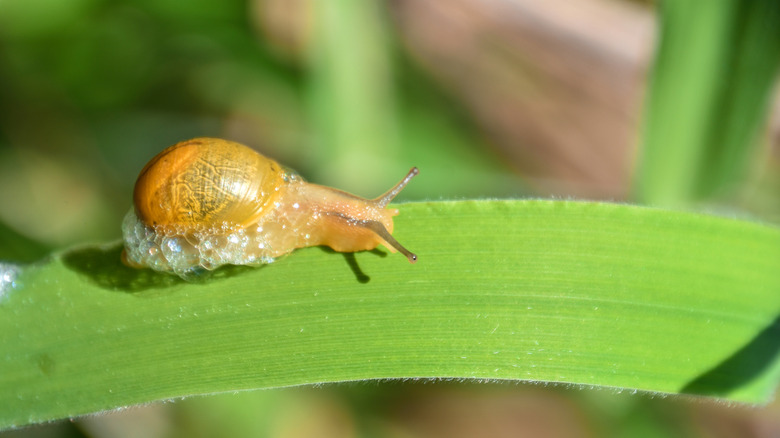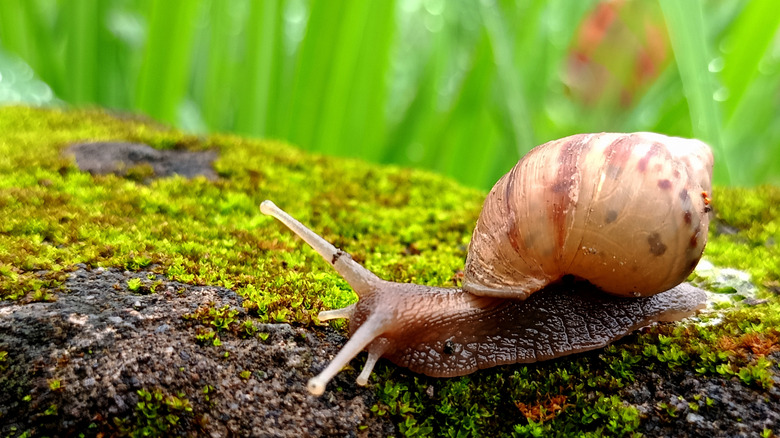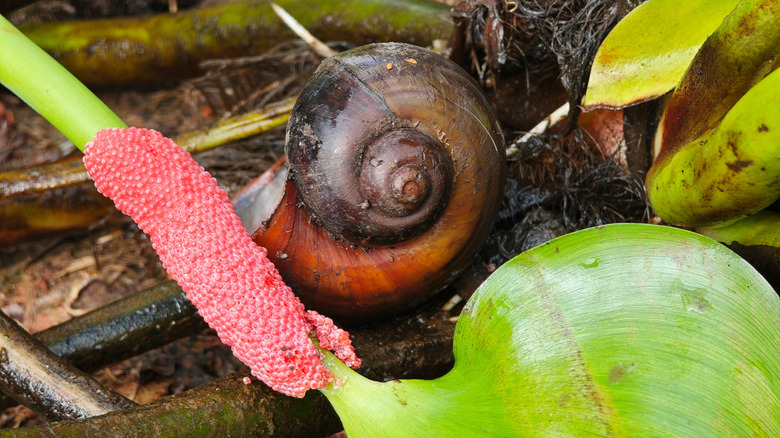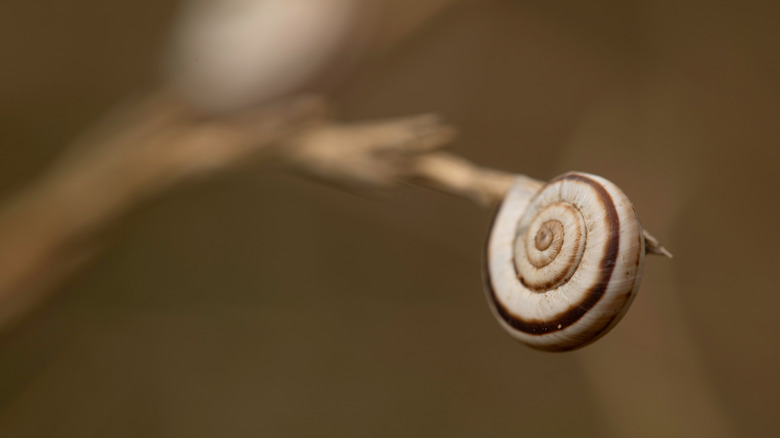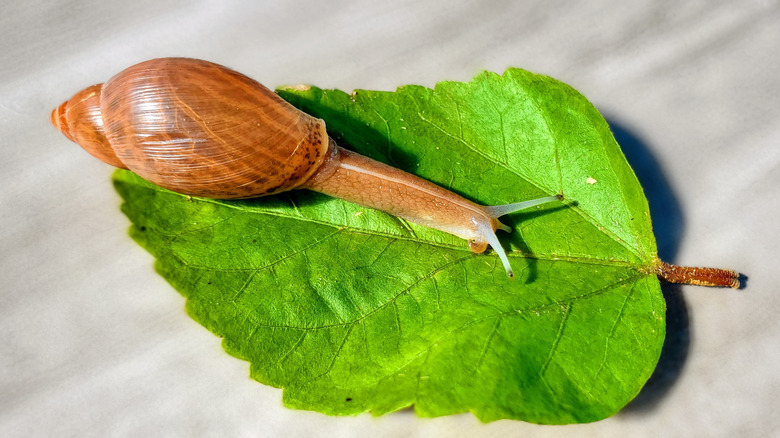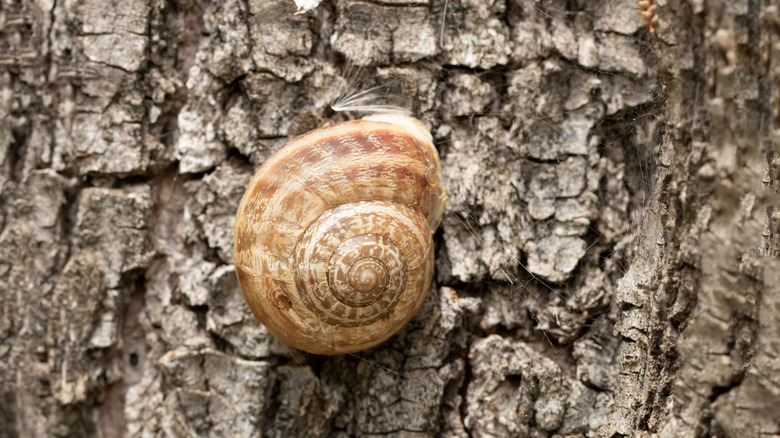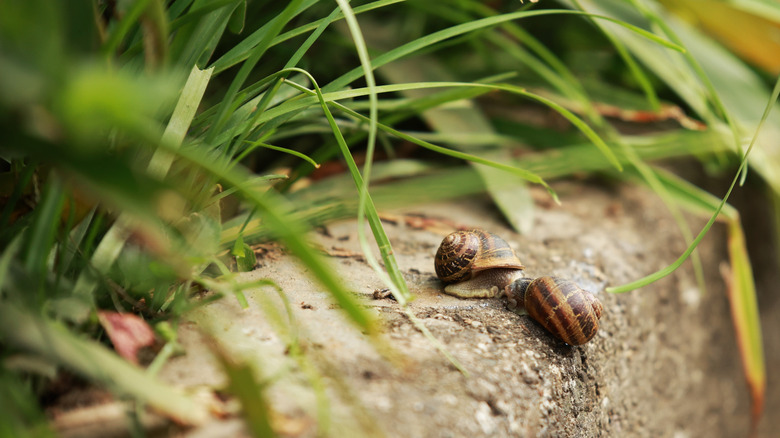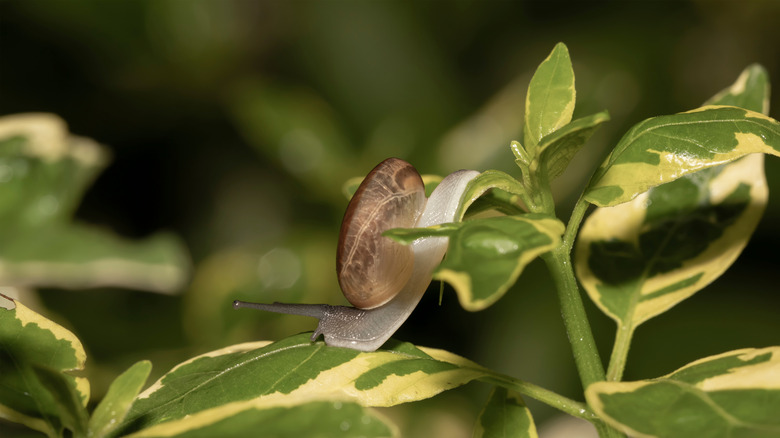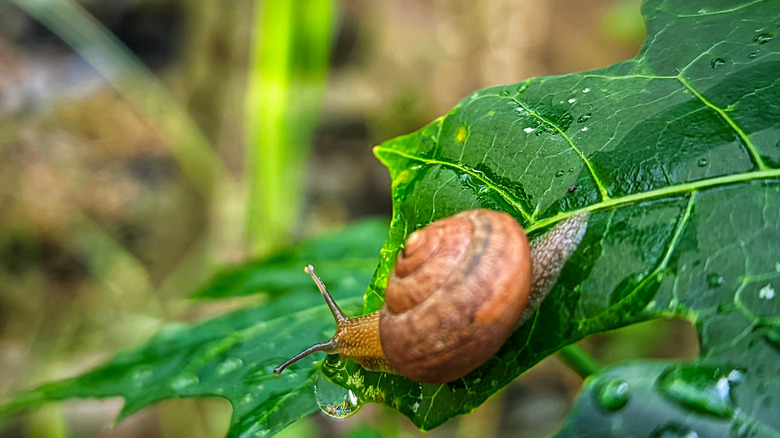8 Invasive Garden Snails You Never Want To Find In Your Garden
Snails move slowly, but the damage they cause to plants can build up fast. They are often voracious generalist herbivores. They damage flowers, fruits, leaves, and other succulent parts of plants. But it doesn't just stop there. When moving about on plants, they leave behind a trail of mucus. This not only damages the plants but also affects the quality of their produce. And the worst part is that some snails carry pathogens and parasites that can affect both plants and humans. For instance, the giant African snail is a garden snail you should never touch, as it carries rat lungworm.
Nevertheless, snails are something you don't want in your garden, especially the invasive kinds. Some examples of invasive snails include the white garden snail, milk snail, giant African snail, and golden apple snail. Now, their names might be cute and lovely, but the problem with invasive species is that they lack natural predators. This allows them to reproduce without any checks, which is not a good thing for plants. Therefore, not only should you be aware of invasive snail species, but you should also know tips for keeping snails and slugs out of your garden.
Giant African land snail
Few snails are as destructive and invasive as the giant African snail (Lissachatina fulica). It eats more than 500 species of plants and carries pathogens and parasites. Moreover, these snails can travel long distances by clinging to vehicles, and because they are mostly active at night, you won't even see them. However, you can easily recognize them because of their giant size, reaching up to five inches in diameter and eight inches in length. Color can vary, but they are mostly light brown and have dark stripes. In gardens, they often attack bananas, papayas, cucumbers, and carrots.
Channeled apple snail
Also known as the golden apple snail (Pomacea canaliculata), it is an amphibious gastropod, which means it can live both in water and on land. Don't be fooled by their name, though! The name does not refer to the plants they attack, but rather their size, which can be as big as an apple or a tennis ball. To identify them, look for snails with five to six whorls on their shells. These will be separated by deep grooves — hence the name "channeled." Other than being invasive, they carry parasites, so you definitely don't want them in your garden.
White garden snail
The white garden snail (Theba pisana) is invasive and a dangerous pest of many ornamentals. It may look similar to the milk snail, another invasive snail, in appearance, but has a flatter, smaller, and light-colored shell with a dark center. What makes it the worst is its incredibly high reproductive rate. If conditions are ideal, they can gather in thousands on trees, which can lead to severe defoliation and, in extreme cases, death of the tree. So, if you see one around, you might want to invest in a copper mesh to prevent snails from invading your garden.
Rosy wolfsnail
The invasive species specialist group at the International Union for Conservation of Nature has listed the rosy predator snail (Euglandina rosea) among the most invasive species in the world. They are sometimes considered beneficial for gardens as they prey on other snails and slugs. However, this strategy can backfire as they pose a significant threat to native molluscs due to their voracious appetite. You can identify them by their brownish-pink shell with prominent growth lines. Adults can reach a size of up to four inches, and can be seen in urban gardens, roadsides, and hardwood forests.
Milk snail
Milk snail (Otala lactea) is another large invasive snail that feeds on fruits and plants, so finding it in your garden sure isn't a good sign. These snails are usually active at night, and you can pinpoint them by their milky brown shells with patterns of stripes and dots, and dark brown spiraling lines. You can generally find them in rocky or bushy areas. Nevertheless, these snails are edible and even popular in some dishes across Europe. Their management strategies also take advantage of this and suggest people/chefs to include them in their dishes instead of the native snail species.
Brown garden snail
The invasive brown garden snail (Cornu aspersum) loves munching on citrus trees and can gather in large numbers on plants. But they have also been seen wreaking havoc on grain crops, garden flowers, and vegetable crops. They mostly chew on leaves but can also damage twigs and branches. When it comes to size, they are rather small, only measuring about one inch, and have distinctive gray and brown colored patterns on the shell. You are most likely to find them active at night. But some might also come out of their hiding places during the day if it rains.
Decollate snail
The decollate snail (Rumina decollata) is a small, invasive species about an inch long. Their shell is usually tan to light brown in color and often has a broken-looking tip. They mostly live in leaf litter and don't climb plants, but if it rains, they might. That is why the damage they cause to plants is limited only to young seedlings and leaves that are touching the ground. If found in the garden, you can easily remove them by picking them with your hands. Also, if you want to prevent future invasions, consider setting up barriers around your plants.
Asian trampsnail
Asian trampsnail (Bradybaena similaris) is another invasive pest of citrus and many other important crops. However, it also affects several ornamentals and vegetables. Other than plants, it can also affect humans as it carries rat lungworm, which can cause Neuroangiostrongyliasis, a disease of the brain and spinal cord. In size, it is about half an inch long and white, and its shell is whitish or brown, sometimes with a brown band. You can set up beer traps to control them, which are exactly what they sound like. The snails are drawn to it and then drown in it.
